|
Responses to incidents such as fires and floods typically require organization and coordination in order to be successfully incorporated into the incident's organizational structure. Responders need to be properly equipped, carry personal protective equipment (PPE) appropriate for the type of emergency, and understand how and where they fit in the emergency's Incident Action Plan.
Responders typically fall into one of three categories: single resources, resources formed into Strike Teams or resources formed into Task Forces.
Strike Teams are generally made up of three to five similar type resources (such as stock trailers.) Task Forces typically involve different types of resources that would work together to achieve mission objectives.
An example of a Strike Team response occurred in neighboring Washoe County for the Little Valley fire. Five stock trailers with a pilot vehicle (an Animal Services truck) responded to that incident.
Strike Team, lined up, waiting for assignments.
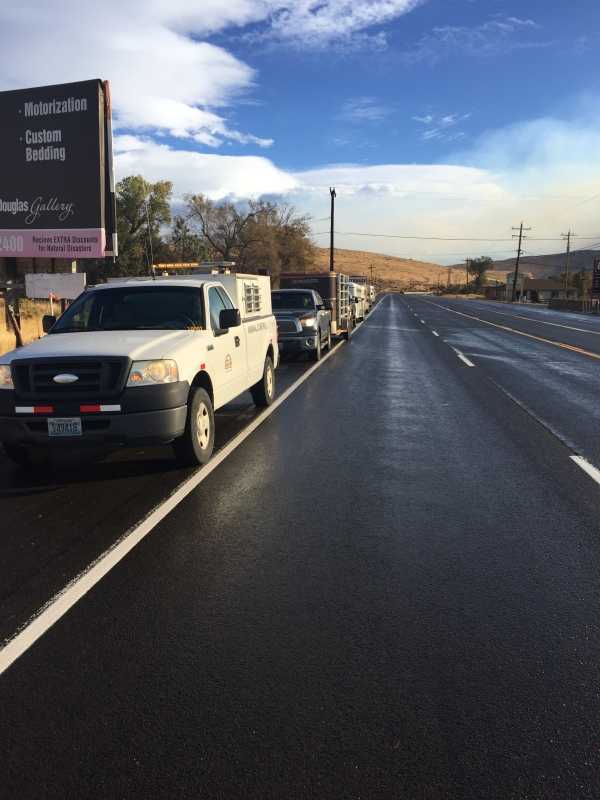
An example of a Task Force response involves a fire that occurred near Topaz Ranch Estates in neighboring Douglas County near the Nevada-California line. A fire that started in the edge of the subdivision quickly burned 17 structures and 5,000 acres, and was threatening another 250 homes and ranchettes.
LRTC responded with four horse trailers and one portable corral trailer and a crew of ten volunteers. The Task Force leader was in a unit based in Douglas County.
The view from the staging area.
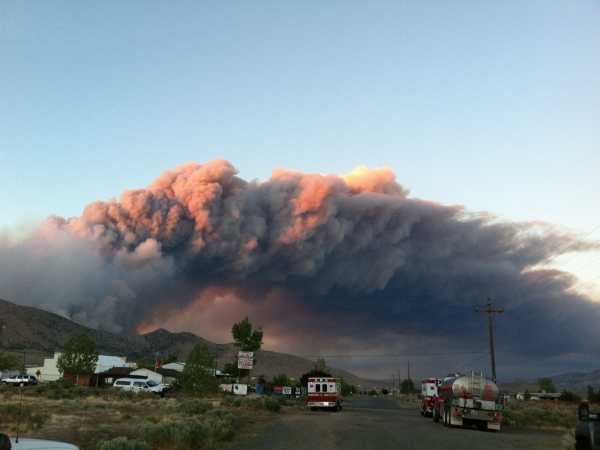
Rainbow trails. The National Guard put on quite an air show.
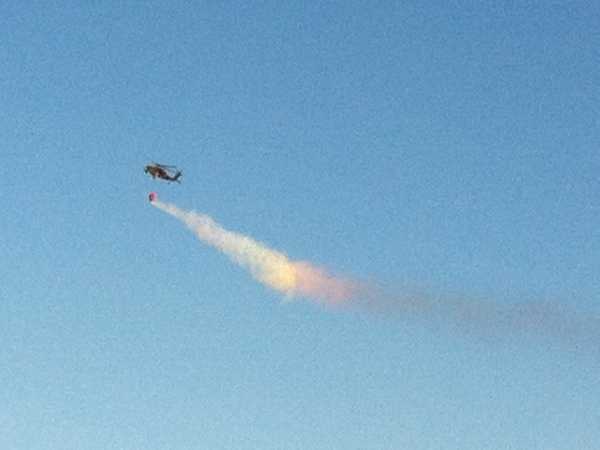
Line-up at Staging.
Teams need to stage together, facing the direction of their anticipated response, and keep lanes open for large vehicles.
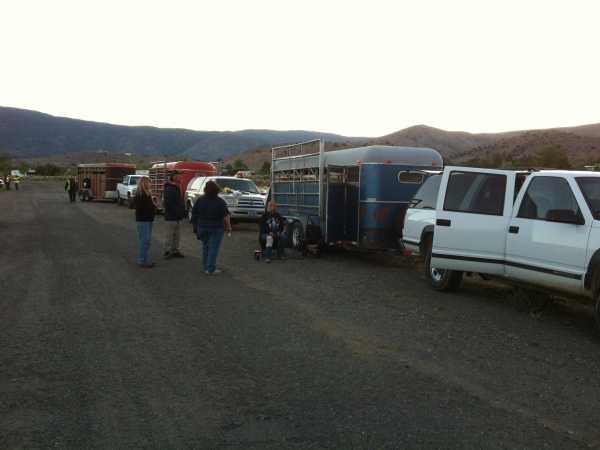
Portable corral trailer with stock tank.
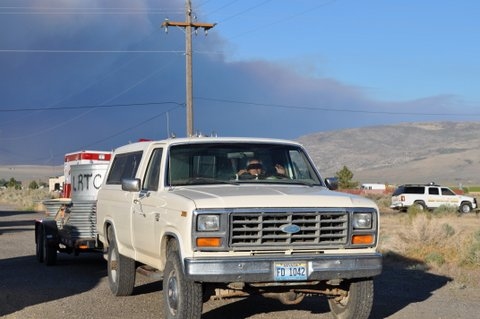
There can be hazards from the sky. Teams need to stay alert during aerial suppression activities.
(National Guardsmen at work.)
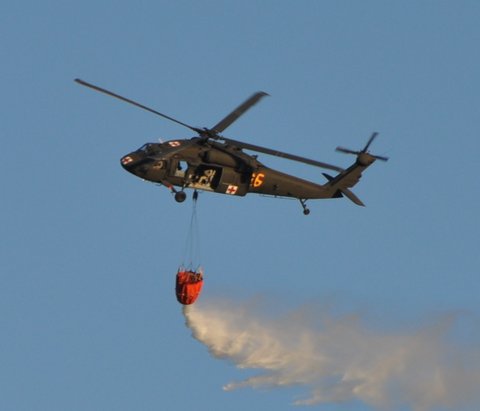
It's a smoky job in very rugged terrain.
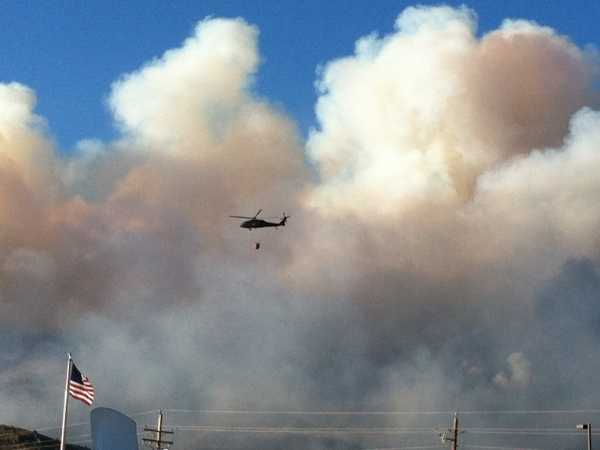
A large fixed wing air tanker dwarfed by the smoke plume.
Responders on the ground may not see approaching air units due to the smoke.
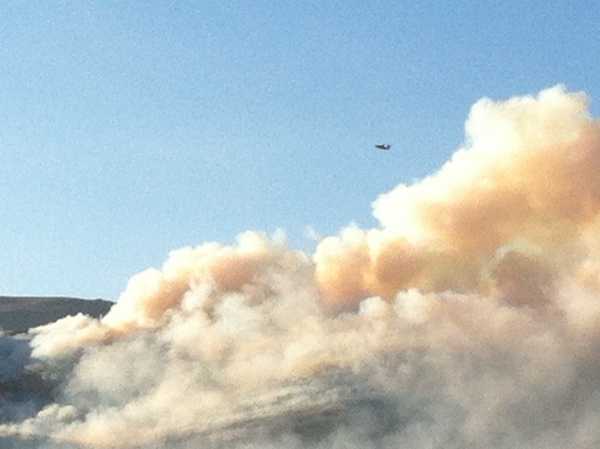
(Fortunately in the Topaz Ranch Estates incident the wind shifted and the fire started moving away from other structures and ranchettes. A few horses had been relocated before our arrival, but at 10:00 PM we were cleared to return home but "remain ready." However the fire was significant enough to engulf Las Vegas with smoke, some 300-plus miles away.)
Other specialized resources may be warranted. Electric power is often lost, impacting rural wells. Even sheltering locations may need clean water brought in since fire crews often put surfactants and foam chemicals to their water tanks.
LRTC's Water Supply 1, needed to provide water at the large animal sheltering location.
Then standing by in the event animals sheltered in place needed water deliveries.
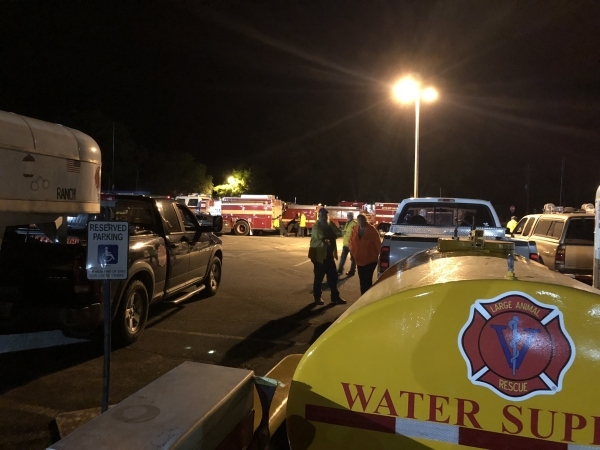
Strike Teams and Task Forces generally remain as a cohesive unit for the duration of their operations, however occasionally the incident requires reconfiguration.
At Little Valley the Strike Team was broken up into Task Forces
with each covering different areas as multiple fires were occurring.
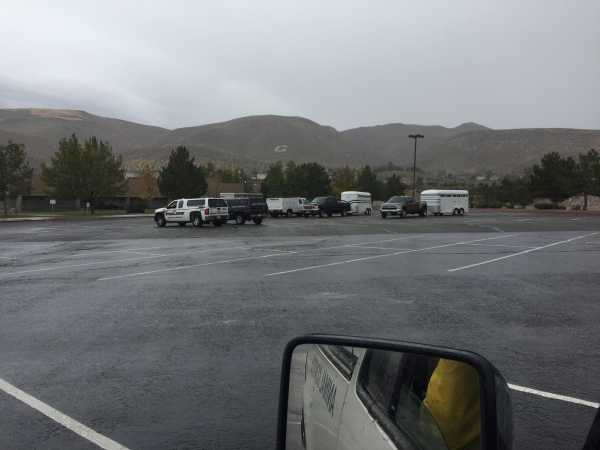
So that low-flying fire and law enforcement aircraft can distinguish between trailers actively engaged in evacuation operations versus unauthorized or parked trailers in their operational areas, we have adopted a rooftop identification system for our technical rescue and evacuation transport trailers that can be recognized by aircraft. These identifiers are now in the respective agencies' resource binders.
R = Technical Rescue. SOS = Special Operations Support. TR = Transport. WS = Water Supply.
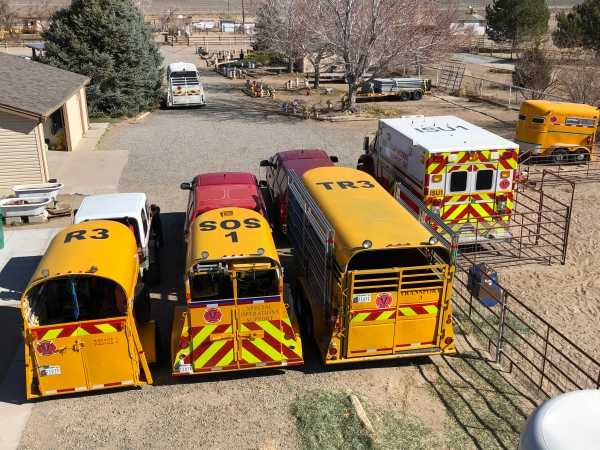
Key points when responding.
(For this discussion the term "Strike Team" also applies to Task Forces.)
- Strike Teams should be assembled based on either specific resource needs requested by Incident Command (numbers of units) or general mission assignments (description of needs whereupon the team determines numbers and types of units needed.)
- Strike Teams require one designated Strike Team Leader who will be the interface between the team and Incident Command.
- Strike Teams should have some form of common communications between all units in the team.
- Strike Teams should enter the incident as a team, report to the assigned staging location as a team, and leave the incident as a team.
- Units should park together, facing the likely direction of response and leave Staging Area lanes clear for other large units.
- Responders must have clothing and other protective gear appropriate for operations in fire zones.
- Strike Teams are generally responsible for maintaining accountability for all team members.
- Strike Team units should only respond to locations ordered by or authorized by superiors in Incident Command.
- When in the field a lookout or Safety Officer must be present to monitor fire conditions and impacts on exit routes.
- Strike Teams should avoid breaking out single units to respond to specific mission requests. If the entire team isn't required, a minimum of two units should respond to the mission location unless the request is proximate to the balance of the team.
Detailed information relating to these types of responses can be found in the document
Developing an Effective Regional
Large Animal Evacuation Program.
|














